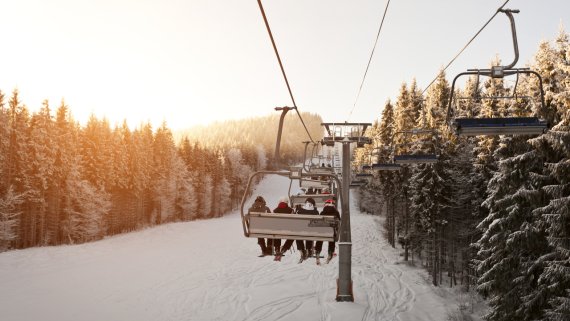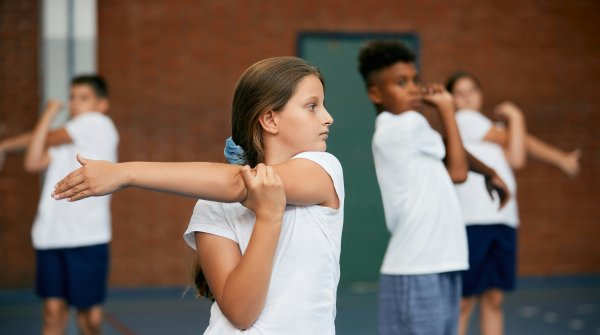
Ski length and width, edge grind and waist, flex hardness, stiffness and elasticity. What about the damping, what about the appropriate base? If you are thinking about buying skis, you quickly get into a jungle of options. Prices are open to the top and there is no shortage of technical terms.
The trick: the selection can be narrowed down considerably by asking two personal questions:
1. how great are your own winter sports experiences?
2. where, how and to what extent do I want to use the skis?
For beginners, whether men or women, the answer is usually: there is hardly any experience and if there is, it is long in the past.
The question of use is primarily one of time and money. Because as a beginner skier, you first move on the prepared slopes of the ski resorts.
Thanks to the rapid triumph of carving skis, which began in the 1990s, hardly any other skis are offered today. This is perfect for ski beginners, because the waist of the boards ensures easy handling. Turning is possible after a few practice sessions, and as long as the slopes don't get too steep, even the novice skier will quickly feel like a natural.
In fact, the ski selection is large, but narrows down quickly. This can usually be seen in the names of the boards: Supercross carver, race carver, slalom carver or freeride ski? That doesn't sound like a beginner. So the purchase can still wait.
The ski portfolio offers some models that are ideally suited for beginners, but also promise fun for a long time. These include:
- Easycarver: Lightweight, relatively short skis, very maneuverable and with good handling.
- All-round carvers: short to medium length, suitable for medium speed. Handling requires some practice.
- All Mountain Carver: Very wide skis with good lift, good handling. They are the first choice for beginners only if deep snow is the declared goal.
The optimal characteristics of the skis depend on the physical conditions of the skier and his personal preferences. Blanket answers are therefore tricky. If you want to be on the safe side, borrow the equipment for your first attempts on the slope; this will make the purchase decision easier later on.

We recommend relatively short skis for beginners, as these are more maneuverable and thus easier to direct. We recommend a length slightly smaller than your own height. If you place the ski on the ground in front of you, it should reach at least up to your chin.
The same applies to the width and waist of beginner skis: maneuverability and forgiveness of potential skiing errors have priority for the beginner. He therefore tends to go for a smaller waist. This allows the weight to be shifted well, the ski responds immediately and turns are easy in both directions.
While hard skis, i.e. skis with a higher torsional stiffness, react faster, softer materials have the great advantage that they are more forgiving of skiing errors. They are poorly suited for icy slopes, where grip is lacking. For beginners on groomed slopes, however, soft skis are the better choice. This also applies to the so-called flex, the bending hardness. A ski that hardly flexes compensates for unevenness more poorly and is therefore more difficult to guide.
Whether beginners will dig deep into their pockets for their first pair of skis depends above all on their personal budget. The polyethylene base in the upper price segment is such that more wax can be absorbed. This improves glide and durability. The edges of "good" skis also need to be reground less frequently and therefore last longer.
The price is also influenced by the respective construction type and its core. In high-priced models, tubes made of fiberglass are sometimes used, which increases the stiffness. Beginners do not need this. The normal construction in layers - as a "sandwich - is used in all price categories and is suitable for novices. The core can be made of adhesive foam. Cores made of glued wood are more durable, but significantly increase the price.
Beginners should expect to pay at least 200 euros for a pair of skis.
The online offer is large and the skis can be configured exactly here. Nevertheless, we advise stationary purchase. In addition to the advice, the on-site purchase offers the advantage that you can perfectly match the entire equipment, which is especially advantageous for the ski boots and binding.
Those who prefer to try out the start on the slopes with a snowboardcan get the best tips here.
- ISPO awards
- Mountain sports
- Bike
- Design
- Retail
- Fitness
- Health
- ISPO Job Market
- ISPO Munich
- ISPO Shanghai
- Running
- Brands
- Sustainability
- Olympia
- OutDoor
- Promotion
- Sports Business
- ISPO Textrends
- Triathlon
- Water sports
- Winter sports
- eSports
- SportsTech
- OutDoor by ISPO
- Heroes
- Transformation
- Sport Fashion
- Urban Culture
- Challenges of a CEO
- Trade fairs
- Sports
- Find the Balance
- Product reviews
- Newsletter Exclusive Area
- Magazine







